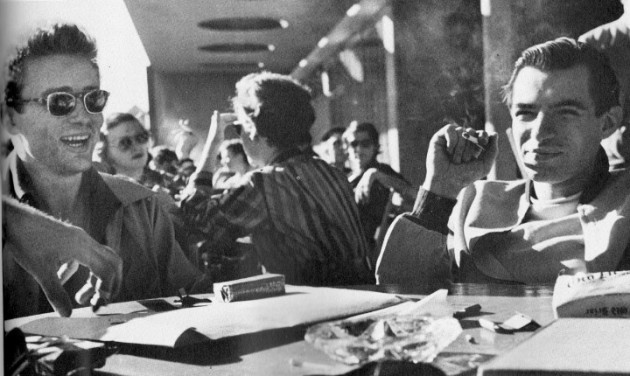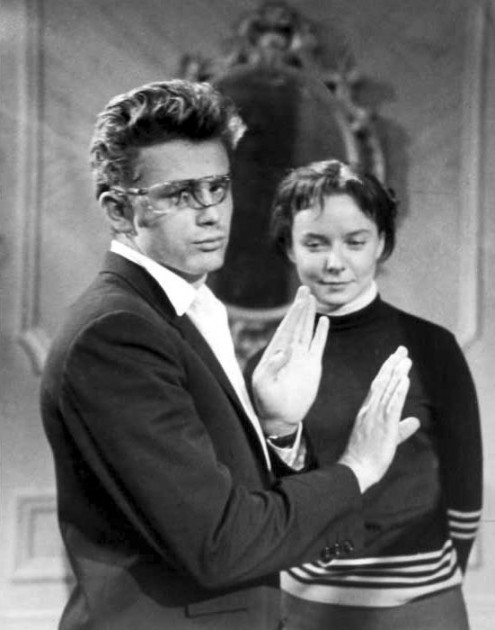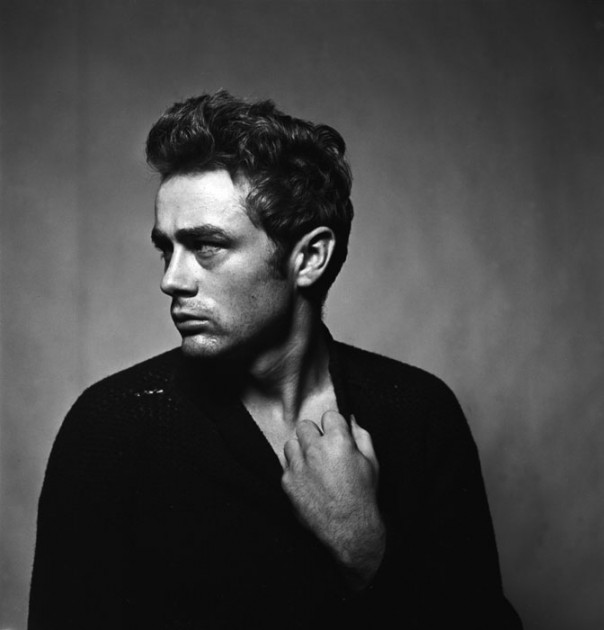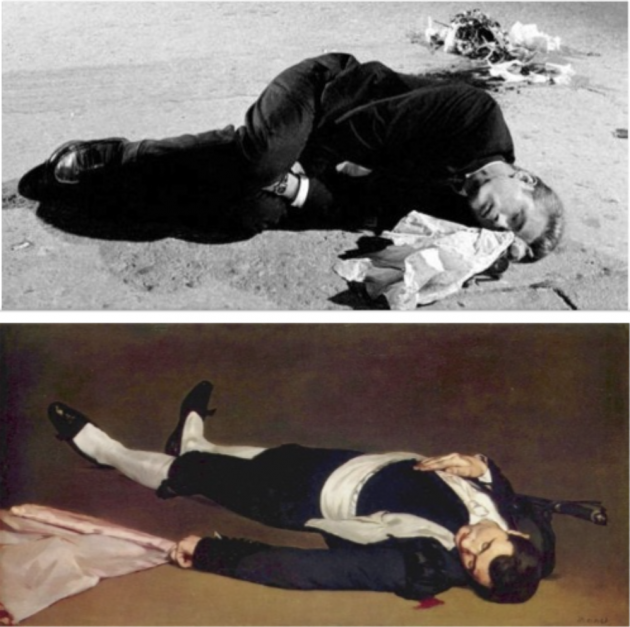Thursday, April 14th, 2016
James Dean and Art
Over the past few weeks I have been doing some research on James Dean’s interest in visual art. Although Dean is known as an actor and didn’t professionally dabble in the visual arts, he liked to sketch and occasionally paint. One site claims that there are only three James Dean paintings that are known to exist, including Road to Happiness (shown above). Other works of art are on display at the James Dean Gallery in Indiana. Some select sketches are also found online here. While I don’t think that any of these sketches are revealing of a great artistic talent, it is interesting to think about James Dean’s thought process and how his creative mind is manifest in other outlets beyond acting.
James Dean also had an appreciation for Western art. One of his favorite haunting places at this time was the Museum of Modern Art, and Dean continued to frequent the museum even after he rose to fame.1 A group of photographs from 1954 show Dean visiting with friends at the top of the museum. One of the friends in the group is Roy Schatt (see below); Schatt was a photographer who is famous for a series of portraits of James Dean.
It is apparent that James liked to reference art and clown around when he was with Roy, and I have two examples to share. One such “artsy” moment was captured below on the set of “The Thief.” Here, James Dean pushed his glasses over to the side of his face, so as to give the impression that he had more than two eyes. He turned to Roy and exclaimed, “Hey, I’m a Picasso!”
Another time, James Dean decided to reference Renaissance sculpture. During the so-called “Torn Sweater” photoshoot with Schatt, James Dean suddenly decided to try a new pose by turning his head slightly to the left and looking down. Schatt recalled, “I asked him what…he was doing, it was such a strange pose. He said, ‘Don’t you see it? I’m Michelangelo’s ‘David.'”3 I’m fairly certain that the photograph below is the one from the photoshoot which refers to this anecdote, especially since James Dean is holding his arm up toward his shoulder, similar to how Michelangelo’s “David” has a lifted arm in order to carry a sling.
According to one biographer, Manet was James Dean’s favorite painter, and Manet’s Dead Toreador (1864) inspired the pose that Dean used during the opening of Rebel Without a Cause (shown below).2 Although Dean is turned onto his side in the film still below, There does seem to be some similarities with black clothing of the figures, as well as the ways that the heads are tilted at a slight angle.
I imagine that James Dean may personally have seen Manet’s Dead Toreador on display in the National Gallery, if he ever traveled to Washington, DC. Dean was an avid fan of bullfighting; I also imagine that he would have been familiar with the other half of this same canvas, titled The Bullfight, which is part of the Frick Collection in New York.
I read another interesting anecdote which may also reveal Dean’s familiarity with and appreciation of Western art. Screenwriter Stewart Stern revealed that just before the shooting of Rebel Without a Cause, James Dean disappeared a few days. Then, Stern explained that about ten days later “he just showed up at my office and looked at this perfectly blank wall, [and] stood back pretending to admire an imaginary painting. I think he was looking at Picasso’s Guernica. he asked me if it was real or a reproduction, and I said, “Oh…it’s real of course!”‘4 Dean didn’t even mention his disappearance or why he had come back to work, but simply clowned around about a painting and eventually resumed work on Rebel.
James Dean found inspiration and humor through art, and after his death, James Dean’s image and persona served as a source of inspiration for subsequent artists. Probably the artist who has been most inspired by James Dean’s image and likeness is Kenneth Kendall. Kenneth Kendall actually met James Dean in January 1955, and Dean had asked if Kendall would be interested in sculpting him. This project never came to fruition at that moment; Kendall was focusing on other projects and then James Dean died in a car crash on September 30, 1955. However, Kendall was able to acquire a life mask from Dean’s apartment after his death to use as a model. Kendall has created many depictions of James Dean, including the a nude sculpture and a portrait bust that serves as a monument to James Dean (see below) at Griffith Observatory in Los Angeles (which is the location of a few iconic scenes in Rebel Without a Cause).
It’s neat to consider how James Dean was interested in different forms of creative expression, not only through acting but also visual artistic mediums. It isn’t surprising to me that his creative persona and talent served as further creative inspiration for visual artists like Kenneth Kendall. Do you particularly like any other works of art that James Dean either created or inspired? Please share!
1 David Dalton, James Dean: The Mutant King: A Biography (Chicago: Chicago Review Press, 2001, p. 125. Available online HERE.
2 Ibid., p. 236. Available online HERE.
3 Ibid., p. 119.
4 Ibid., p. 235. Available online HERE.






Interesting! I’m not super informed about James Dean, but Manet is one of my favorite artists. I think creative people often have multiple outlets for that creativity and sometime one just emerges as more pronounced than another.
All new to me, so thank you. I imagine that everyone in the world wants an interest in something that is NOT work-based. If a person is a plumber, he may want to learn foreign languages every weekend. If he is a dentist, he may want to play vigorous sport. If he is an accountant, he may want to play the drums. Loudly!
Being an avid fan of bullfighting might be unexpected. But it makes perfect sense that an eye-grabbing artist like Manet might have been James Dean’s favourite painter. [I got into art history by falling in love with Caravaggio].
James Dean painted in oil! .. I was pleasantly shocked. Spotted his art on Google while looking at visual art by another actor, the late Anthony James. They were both quite talented! Dean was far more complex and sophisticated than simply being a Mid-West basketball kid who became an amazing actor and raced cars. He probably would have raced at Le Mans but like bull fighting, cars were a blood sport without seat belts back then. Very interesting blog, great research, Kudos! Ps. who’s the guy bombing the photo between James Dean and Roy Schatt? lol
Jmes 2021